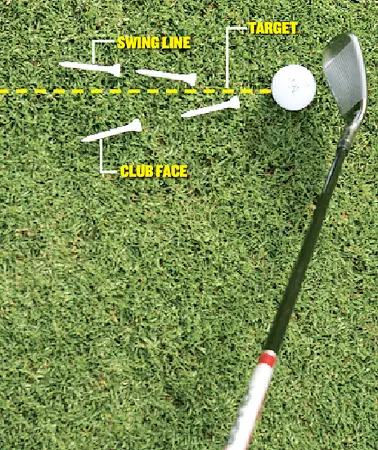What is a Golf Handicap?

In the world of golf, skill levels vary greatly among players. So, how do golfers of different abilities compete on a fair and equal basis? Enter the concept of a golf handicap. A golf handicap is a numerical measure that levels the playing field, allowing golfers of varying skill levels to compete against one another. But what exactly is a golf handicap and how does it work? In this article, we will unravel the mysteries of golf handicaps, exploring their definition, calculation methods, and significance in the game of golf. We’ll delve into the intricacies of Handicap Index, Course Handicap, and Playing Handicap, deciphering how these elements interact to create a fair competition environment. Additionally, we’ll discuss the importance of golf handicaps in promoting enjoyable gameplay, tracking progress, and setting goals. So, whether you’re a seasoned golfer or new to the game, join us as we demystify the world of golf handicaps and unlock the keys to fair competition and personal growth on the golf course.

What is a golf handicap?
A golf handicap is a numerical measure that represents a golfer’s potential ability relative to the par score of a golf course. It serves as an equalizer, enabling players of varying skill levels to compete on a level playing field. A lower handicap indicates a more skilled golfer, while a higher handicap signifies a less experienced or less skilled player.
Handicap Index
The Handicap Index is a standardized measure used to calculate a golfer’s handicap. It represents a player’s potential scoring ability based on their performance over a specified number of rounds. The Handicap Index allows golfers to compete with players from different courses and tees, ensuring fair competition across various golfing environments.
Course Handicap
The Course Handicap is a specific handicap value assigned to a golfer for a particular course. It reflects the difficulty of the course being played and allows players to adjust their scores to compete on an equal footing. The Course Handicap takes into account factors such as the course’s rating and slope.
Playing Handicap
The Playing Handicap is the Course Handicap adjusted for specific formats or conditions of play. It considers additional factors such as the format of the game (stroke play, match play) or any modifications applied to the rules for a particular competition.
Now that we understand the basic concepts of golf handicaps, let’s delve into how these handicaps are calculated.
How is a golf handicap calculated?
Golf handicaps are calculated using established methods that consider a player’s performance data and course-specific factors. Let’s explore two commonly used handicap calculation systems:
USGA Handicap System
The USGA Handicap System is widely adopted in the United States and provides a standardized method for calculating golf handicaps. It utilizes a formula that takes into account a golfer’s score differentials, which are the differences between their adjusted gross scores and the course rating.
The USGA Handicap System involves a calculation process that considers the best differentials from recent scores, the number of rounds played, and a handicap revision schedule. This comprehensive system ensures fair and accurate handicap calculations for golfers across the country.
CONGU Unified Handicapping System (UHS)
In the United Kingdom and many other countries, the CONGU Unified Handicapping System (UHS) is commonly used. It follows a similar approach to the USGA system, taking into account score differentials, the course rating, and other factors. The UHS allows golfers to establish and maintain their handicaps, ensuring fair play in various golfing events.
To calculate a handicap, golfers typically submit their scores after each round, which are then adjusted based on the specific handicap calculation system being used. The calculation considers the difficulty of the course, the player’s recent performance, and other relevant factors.
Now that we have explored how golf handicaps are calculated, let’s understand why they are important in the game of golf.
Why are golf handicaps important?
Golf handicaps play a crucial role in promoting fair and enjoyable competition among golfers. Here are some reasons why handicaps are important in the game:
Creating a level playing field
One of the primary purposes of handicaps is to level the playing field for golfers of different skill levels. By adjusting scores based on handicaps, players of varying abilities can compete on an equal footing. This promotes fair competition and enhances the enjoyment of the game for all participants.
Providing a measure of progress and improvement
Golf handicaps serve as a measure of a player’s progress and improvement over time. As golfers work on honing their skills, their handicaps can serve as a tangible representation of their development. Tracking changes in handicap allows golfers to set goals, measure their performance, and gauge their improvement as they strive to lower their handicap.
Golf handicaps also encourage golfers to focus on their own game and aim to better their personal records, rather than solely competing against others. This fosters a sense of personal growth and accomplishment within the game.
Now that we understand the importance of golf handicaps, let’s explore how they affect gameplay.
How does a golf handicap affect gameplay?
Golf handicaps have a direct impact on the way the game is played and the rules that are applied. Let’s explore two key aspects of how handicaps affect gameplay:
Adjusting scores for fair competition
In stroke play formats, golfers apply their handicaps to adjust their scores for fair competition. The net score, which is the gross score minus the player’s handicap strokes, determines the outcome of the game. By using handicaps to level the playing field, golfers of different skill levels can compete on an equal basis, with the final result reflecting their net scores.
For example, let’s consider a match between two golfers: Golfer A with a handicap of 10 and Golfer B with a handicap of 15. Golfer A would deduct 10 strokes from their gross score, while Golfer B would deduct 15 strokes. The net scores, after handicap adjustments, determine the winner of the match.
Strategies for playing with a handicap
Golfers with handicaps can strategically use their additional strokes on specific holes. The handicap system assigns strokes to the most challenging holes on a course, where golfers with higher handicaps receive more strokes. These strokes can be strategically applied to minimize the impact of difficult holes and maximize the chances of scoring well.
For instance, a golfer with a high handicap might receive an additional stroke on a challenging par-3 hole. By using that extra stroke, the player has a better chance of achieving a net par or better, compensating for the hole’s difficulty.
Understanding your handicap and the strokes allocated can help you devise a course management strategy that leverages the additional strokes received.
Now that we have explored how golf handicaps affect gameplay, let’s discuss the process of maintaining and updating a golf handicap.
Maintaining and updating a golf handicap
To ensure accurate and up-to-date handicaps, golfers must actively maintain their handicap records and comply with established guidelines. Here are key considerations for maintaining and updating a golf handicap:
Submitting scorecards and maintaining a scoring record
To maintain a handicap, golfers must submit their scores from each round of golf they play. These scores are typically recorded on scorecards and submitted to the authorized governing body or handicap committee. It is essential to maintain a consistent scoring record and ensure the accuracy of each submitted score.
Many golf clubs and organizations provide online platforms or handicap management systems where golfers can easily submit their scores and access their handicap information.
Revising handicaps based on performance
Handicaps are not fixed; they are subject to periodic revisions based on a golfer’s performance. Handicap systems typically have revision schedules that determine when and how handicaps are updated. The frequency of revisions may vary depending on the specific handicap calculation system in use.
When revising handicaps, the system considers the golfer’s recent scores, the difficulty of the courses played, and the number of rounds submitted. It is important to note that handicap revisions can result in adjustments either upward or downward based on a golfer’s performance.
Maintaining accurate and up-to-date handicaps ensures fair competition and allows golfers to gauge their progress over time.
Now, let’s discuss additional considerations and factors related to golf handicaps.
Additional considerations and factors related to golf handicaps
As golfers navigate the world of handicaps, there are a few additional aspects to consider. Let’s explore two relevant factors:
Maximum Handicap Index
Some handicap systems impose a maximum Handicap Index limit. This limit ensures that handicap values do not become excessively high, promoting fairness and maintaining the integrity of the system. The specific maximum limit may vary depending on the handicap system being used.
Golfers with Handicap Indexes approaching or exceeding the maximum limit may need to adjust their handicaps to comply with the imposed restrictions. It is important to understand the maximum allowable Handicap Index in your respective handicap system and its implications for high-handicap golfers.
Playing in different handicap systems and formats
Golfers who play in different regions or participate in various golfing events may encounter different handicap systems and formats. It is crucial to understand the nuances and conversion processes when transitioning between different handicap systems.
Additionally, certain formats of play, such as team events or competitions with modified rules, may require specific adjustments to handicaps. It is important to familiarize yourself with the handicap guidelines and regulations specific to the format or event you are participating in.
By being aware of these considerations, golfers can navigate the complexities of handicap systems and ensure their handicaps are applied appropriately across different formats and competitions.
Conclusion
A golf handicap is a fundamental component of the game, providing a fair and equitable way for golfers of different skill levels to compete. Handicaps allow players to track their progress, establish goals, and enjoy the game on a level playing field.
Understanding the basics of golf handicaps, including their calculation methods, impact on gameplay, and the importance of maintaining accurate records, allows golfers to fully leverage the handicap system to enhance their golfing experience.
So, embrace your handicap, use it as a tool for improvement, and enjoy the wonderful game of golf with fairness and camaraderie!





